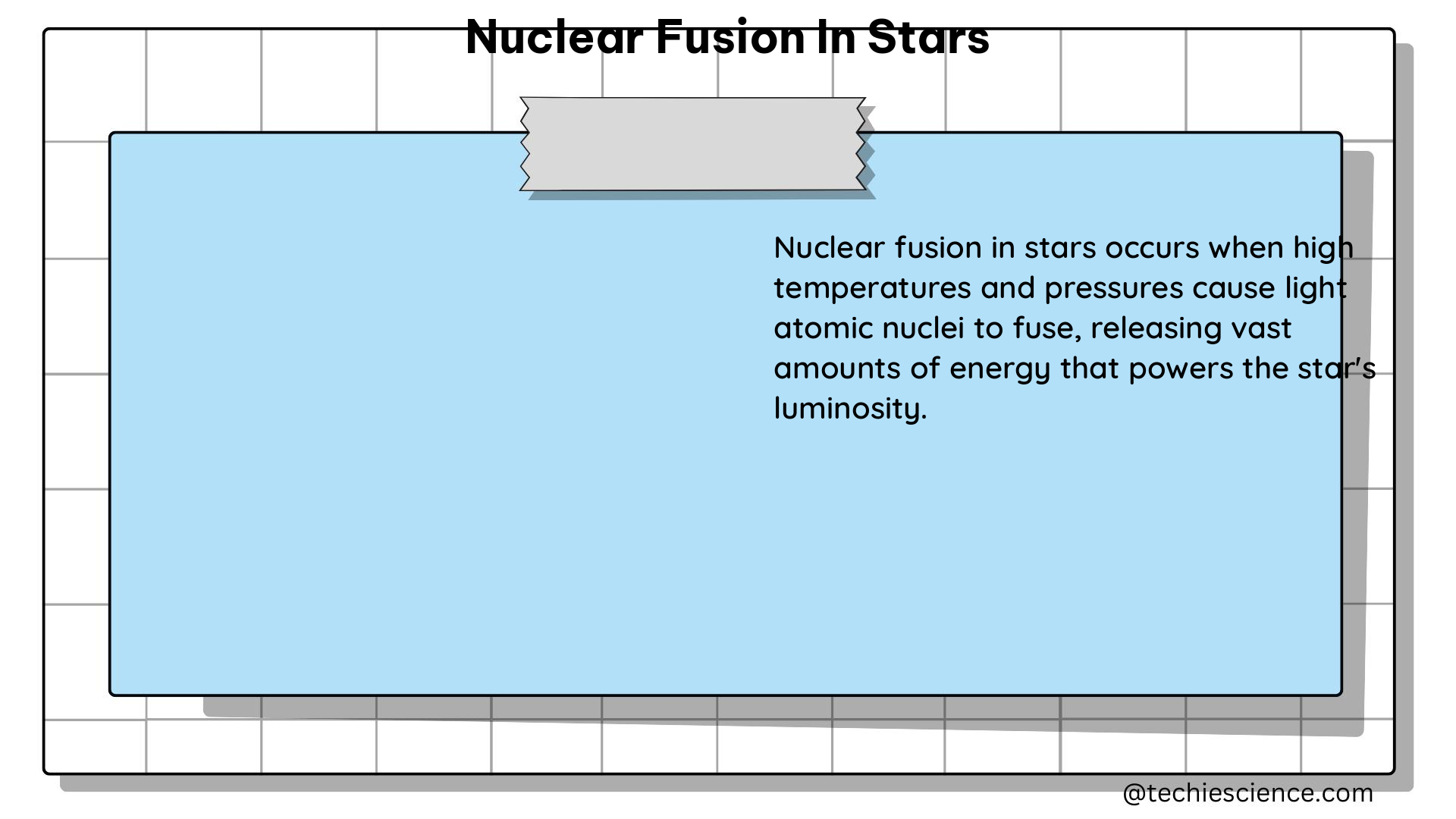Nuclear fusion in stars is a complex and fascinating process that powers the universe. At the heart of this process is the fusion of hydrogen atoms to form helium, releasing a tremendous amount of energy in the process. This energy is responsible for the luminosity and longevity of stars, making them the primary source of light and heat in the cosmos.
Understanding the Fundamentals of Nuclear Fusion in Stars
The temperature inside stars is not high enough to provide the nuclei with the kinetic energy they need to overcome the electrostatic barrier that prevents them from fusing. However, fusion does happen due to a purely quantum effect, the tunnel effect, which allows particles to break through the barrier. The probability of the tunnel effect occurring is extremely low, but inside stars, this is counterbalanced by the sheer numbers of particles involved. These are known as low-energy nuclear reactions (LENR).
The fusion of hydrogen atoms to form helium is the primary source of energy in stars, and it can be represented by the following nuclear reaction:
$$ 4 \, ^1_1\text{H} \rightarrow \, ^4_2\text{He} + 2 \, e^+ + 2 \, \nu_e + 26.73 \, \text{MeV} $$
where $^1_1\text{H}$ represents a hydrogen nucleus (proton), $^4_2\text{He}$ represents a helium nucleus, $e^+$ represents a positron, and $\nu_e$ represents an electron neutrino. The energy released in this process is approximately 26.73 MeV (million electron volts).
Probability of Fusion Reactions in Stars

Experiments have been conducted to determine the probability of fusion reactions occurring, depending on the energy involved. One such experiment aimed at determining the probability of the fusion of two carbon atoms, which is an extremely important reaction for several reasons.
Firstly, the carbon-carbon reaction enables us to determine the abundance of carbon in the Universe. Secondly, it is the gateway leading to the creation of all the other elements of the periodic table. The properties of the carbon-carbon reaction can be determined using quantum theory, but this sometimes results in equations that are extremely difficult to solve.
An alternative approach is to reproduce the conditions inside stars in the laboratory and directly measure the probability of a particular reaction occurring. This can be done using specialized experimental setups, such as particle accelerators and plasma confinement devices.
Tokamak Reactors and Stellarators: The Hope for Fusion Power
The main hope for achieving practical nuclear fusion power is centered on tokamak reactors and stellarators, which confine a deuterium-tritium plasma magnetically. Deuterium and tritium are isotopes of hydrogen, with tritium being radioactive and having a half-life of about 12 years. The fusion of deuterium and tritium produces helium, a neutron, and a significant amount of energy, which can be harnessed to generate electricity.
Tokamak reactors are donut-shaped devices that use a strong magnetic field to confine and heat the plasma, while stellarators use a more complex magnetic field configuration to achieve the same goal. Both types of devices have been the subject of extensive research and development, with the goal of achieving a rate of heat emitted by the fusion plasma that exceeds the rate of energy injected into the plasma.
Challenges and Advancements in Nuclear Fusion Research
One of the key challenges in nuclear fusion research is the development of materials that can withstand the extreme conditions inside a fusion reactor, such as high temperatures, intense radiation, and corrosive plasma. Researchers are exploring a variety of materials, including ceramics, metals, and composites, to find the most suitable solutions.
Another challenge is the development of efficient and reliable plasma heating and confinement systems. This involves the use of powerful electromagnetic fields, as well as advanced control systems and diagnostic tools to monitor and optimize the fusion process.
Despite these challenges, significant progress has been made in recent years, thanks to advancements in high-performance computing, artificial intelligence, and cognitive simulation. These technologies have helped researchers to better understand the complex physics of nuclear fusion and to design more efficient and effective fusion reactors.
Conclusion
Nuclear fusion in stars is a complex and fascinating process that has captivated scientists and researchers for decades. By understanding the fundamental principles of this process, we can not only gain insights into the formation and evolution of the universe, but also work towards the development of practical nuclear fusion power, which could revolutionize the way we generate energy on Earth.
Reference:
- Nuclear Fusion Power | World Nuclear Association
- Fusion in stars reproduced in the lab | CNRS News
- High-performance computing, AI and cognitive simulation helped LLNL conquer fusion ignition | Lawrence Livermore National Laboratory
I am Keerthi K Murthy, I have completed post graduation in Physics, with the specialization in the field of solid state physics. I have always consider physics as a fundamental subject which is connected to our daily life. Being a science student I enjoy exploring new things in physics. As a writer my goal is to reach the readers with the simplified manner through my articles.